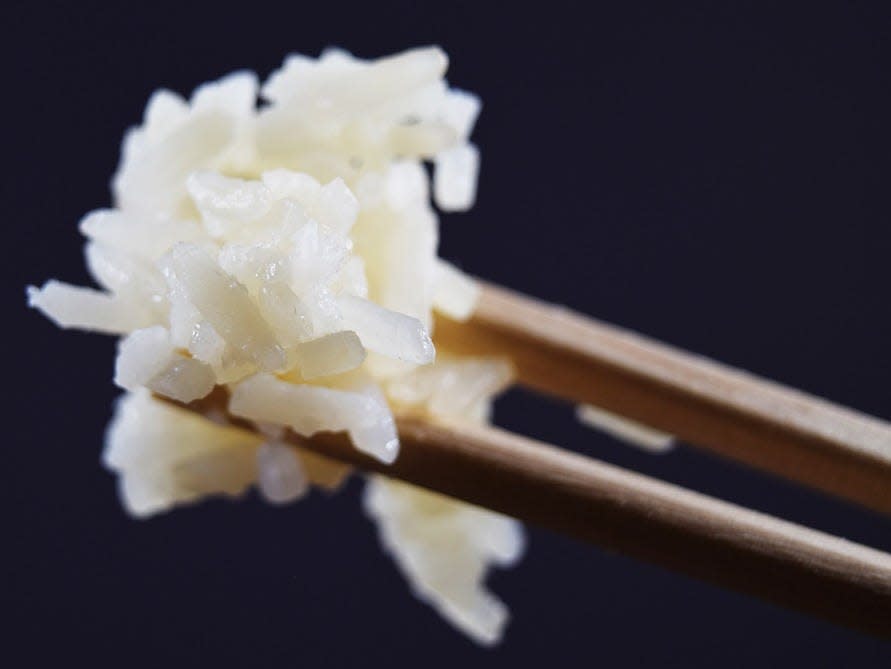White rice spikes blood sugar levels and 'has almost the same effect as eating pure table sugar,' according to Harvard Medical School
White rice is highly processed and can spike blood sugar levels, which may increase the risk of diseases like diabetes if eaten regularly, like every day.
Because of how the body processes white rice, Harvard Medical School has said that it has the same effect as eating "pure table sugar," which is not great for overall health.
It's not as healthy to eat white rice as it is to eat brown rice or less processed alternatives that contain more nutrients, protein, and fiber.
This article was medically reviewed by Lisa Defazio, a registered dietitian and nutritionist in Los Angeles.

White rice has a higher glycemic index than brown rice. Cabeca de Marmore/Shutterstock
More than half of the world's population relies on rice as a staple food. In 2018, 485 million metric tons of rice were produced globally.
Related: How farmers are using 10,000 ducks to keep rice paddies pest-free
White rice is much more common than brown rice because it has a longer shelf life and transports more easily. However, white rice is also less nutritious. Here's what you need to know.
The difference between white and brown rice
White and brown rice are not different species. In fact, most of the rice we eat is the same species -- Oryza sativa. The difference is that brown rice has two distinctive parts that white rice lacks.
The bran, which is the outer edible layer of the rice grain.
The germ, which is the reproductive part of the grain.
These not only give brown rice its color, but they're also the most nutrient-dense parts of rice. One downside is that the fat in the bran and germ makes brown rice spoil more quickly than white rice. The average shelf life for brown rice is about six months.
By contrast, white rice is what's left behind after the grain is polished and the bran and germ are removed. This makes white rice cook faster and gives it a longer shelf life. It also means that white rice contains fewer nutrients than brown rice.
But this does not mean that white rice is inherently bad for you, though it is less healthy, says Elizabeth Ryan, a researcher at Colorado State University who studies the nutrients in rice bran.
"At the end of the day, eating whole grains is always going to be important," Ryan said.
In fact, when you get rid of the bran and germ in rice, here's what you're really removing nutrition-wise:
Calcium, which is important for teeth and bone health.
Fat, which consists of healthy unsaturated fats that are important for cardiovascular health.
Phosphorus, which collaborates with calcium to form strong bones and teeth.
Vitamins B1 (thiamine) and B3 (niacin), which helps keep the nervous system functioning properly.
Protein, which helps build muscle and is essential for growth and development.
Magnesium, which is important for proper neurological function, among many other benefits.

 Yahoo Autos
Yahoo Autos 